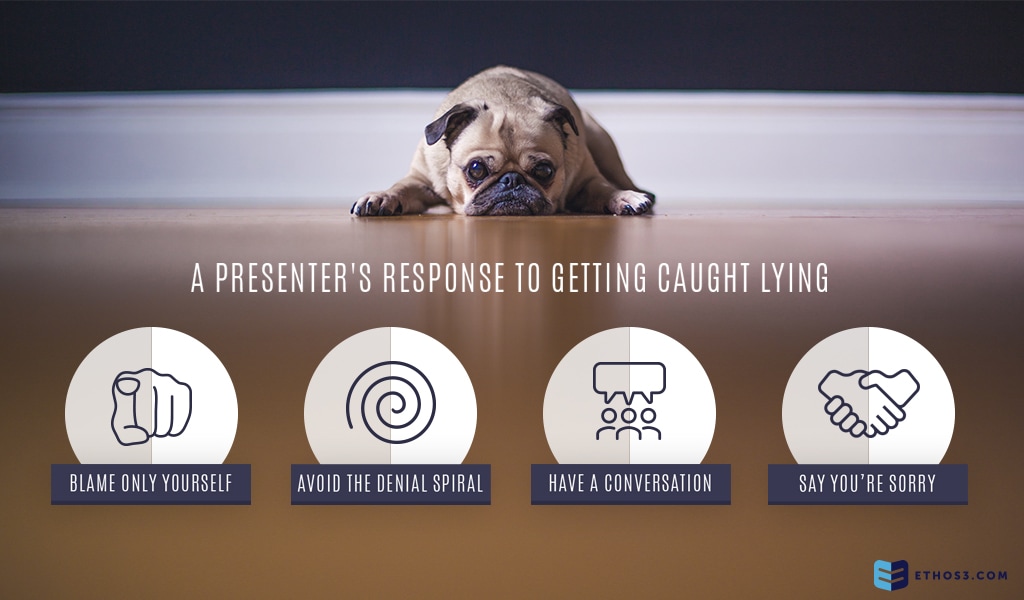During his short time in office, President Trump and his administration have been known to bend the truth or utilize hyperbole to the point of lying. From exaggerating the attendance numbers of his inauguration to tweeting his belief that Barack Obama obtained information from him through wiretapping, Trump is well on his way to establishing himself as dishonest and disingenuous. Presenters and public speakers of all shapes and sizes will find themselves in situations like Trump’s at some point in their careers. We all spread misinformation in one form or the other, but the trust test of an individual’s credibility is how they respond when they are caught. Try these alternate responses if you ever find yourself in a sticky situation with your audience:

1. Blame Only Yourself
Trump tends to place most of the weight of his dishonesty on the media or other entities. This strategy may not work well for presenters – especially if you are presenting on behalf of your company or organization. Earn the trust of your audience back by blaming yourself and shedding any light you can on the purpose or intent of the lie.
2. Avoid the Denial Spiral
You may have made it this far with the charade, but that doesn’t mean you should par for the course. If an audience member calls you out on meddling with the facts, please do not deny it. According to Lifehacker’s Kristin Wong, the denial spiral occurs when an individual falls victim to the sunk-cost fallacy. After a presenter has expended a sizable amount of effort finessing the lie, he or she won’t easily set it in the trash and accept their mistake. But, if you do, your audience will likely applaud you for taking the high road.
3. Have a Conversation
After your audience has discovered your lie, do not immediately go on the defensive. Attendees will continue to respect you as a public speaker if you can take the reveal of the lie and transform it into a constructive conversation. No one pours gasoline on a fire after it has started. They throw buckets of water on it to temper the flames. Use your lie as an opportunity to break down those intangible barriers between you and your audience by igniting a discussion.
4. Say You’re Sorry
This seems to be the step many presenters and people forget. You can only fully recover from presentation lying if you’ve apologized for telling the lie – no matter how small or how large. A sincere apology separates you from achieving presentation success in the aftermath of lying entrapment.
Finally, try to learn some lessons from the experience. For example, thoroughly research every section of your presentation message. Present to friends and family. The more audiences you speak to, the more tests your run your presentation through before its big day. Maybe even ask a mock audience member to accuse you of lying and force yourself to role-play that type of scenario.
Related Posts:
Presentation Training Tips for the 7 Types of Learners
How the Badge Assessment Made Me a Better Presenter
